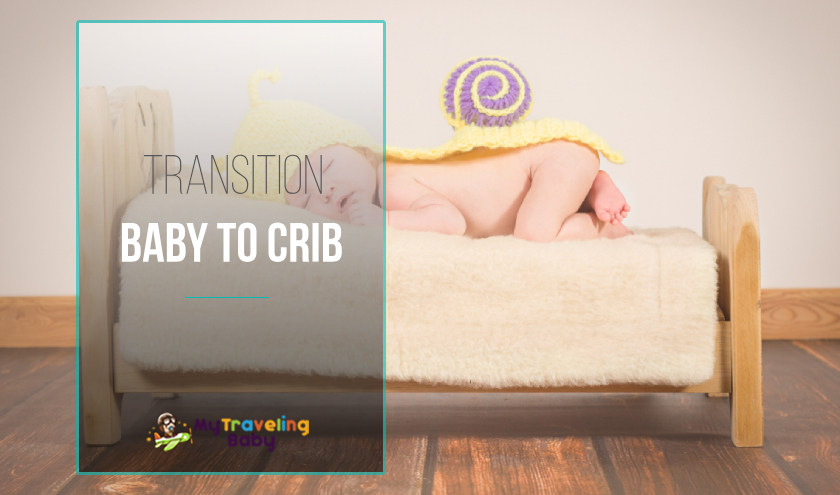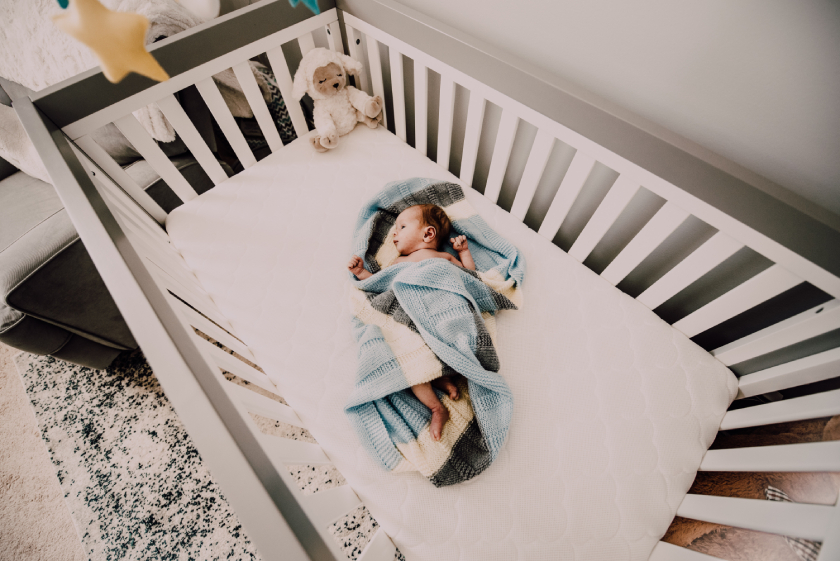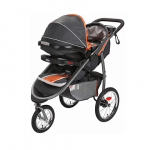
You have probably had the dream of looking down at your little angel all bundled up in their pajamas and dozing off serenely with a faint smile on their lips, haven’t you? Perhaps you even bought the most awesome crib in anticipation.
Unfortunately, getting your child to sleep in the crib might be much more difficult than you thought. It takes some preparation, and one needs to know how to transition baby to crib.
In the first few months of their life, an infant ought to sleep in a bassinet as it makes constant care and feeding much easier. It also reduces the risk of SIDS. Generally, keeping your child right next to you in your bedroom is most practical.
But, eventually, you will have to learn the best way of how to transition baby to crib. Those are the doctors’ orders, so there’s no negotiation. The transition could cause a big shift in an infant’s sleep routine.
To make it easier on both of you, it’s best to know up front what you’ll have to deal with. A few factors are important to note.
When to Put Baby In Crib?
How can a parent know when their little one is ready for a crib? It’s on you to determine when is the right time for that. Infants grow quite fast, especially in those early months, due to growth spurts.
Once your baby outgrows their bassinet, there’s no doubt it’s time for the transition. We don’t want your little one bumping into the sides of their sleeper.
The majority of infants are ready for a crib between their third and sixth month of life. Growth is not the only concern. Once your child is able to push up on their knees and hands on their own, it is time to leave the bassinet behind.
Perhaps none of the above have happened yet, and your little bundle of joy is sleeping soundly in their sleeper. It’s still might be good to transition as early as possible because the longer you wait, the harder it gets. In that case, chances are, your baby is more likely to display some resistance.
Younger infants have less difficulty moving onto a crib as they haven’t yet gotten so comfortable, but sometimes baby won’t sleep in crib. It is also best not to make the move before a significant change of circumstances, such as moving house or going on a family vacation.
Transitioning Process
The most challenging part is the actual move. At this point, you might be a bit confused and are asking yourself countless questions regarding the transition. How do I do it? What should I do to make my child feel comfy?
Thankfully, the American Academy of Pediatrics has a couple of recommendations when it comes to this matter. Here are some things you should do and get.
A full-sized crib that offers enough room for growth spurts that will happen in the new few months. Such a crib is more spacious and versatile.
Make sure the mattress is firm. A firm mattress pad prevents aches and helps your child sleep better.
Make sure there are no obstacles inside the crib that would get in the way of your child’s sleep. You might be tempted to put some pillows or plush toys in there, but do not do that. Placing items in the crib poses a safety hazard.
The safest sleeping position is lying on the back. The position significantly reduces the risk of SIDS (Sudden Infant Death Syndrome) and is also more comfortable for the child.
The optimal temperature in the bedroom is between 68 and 72-degrees Fahrenheit. The right environment will undoubtedly increase the quality of your child’s sleep.
How to Transition Baby to Crib
Once all of the required elements are in place, an important question remains. How to carry out the transition from bassinet to crib in the most comfortable manner for the infant?
Preparing the Crib
Making sure the crib is exceptionally comfy is an excellent place to start. The sheet shouldn’t be too cold when placing the infant as it can wake them up. Using a sleep sack is an excellent way of transitioning, and it will provide the necessary warmth in the crib.
If your little one is particularly fond of having you in their proximity before going to bed, they will probably crave your scent even when they are sleeping. What you could do is sleep on the sheets before the transition in order to leave your scent on it and thus “trick” your baby into thinking you are close by.
One Step at a Time
Safety is essential, and your child needs to feel secure in the crib – this is something that can’t happen overnight. Before the transition is fully completed, your little one has to feel comfy. For starters, you can place the crib into your bedroom, so that your child can sleep close to you, and, after a while, you can move it back to their room.
Routine
Infants typically have a predictable sleeping pattern, and they are better off when they have a sleep routine. Consistency is excellent for the little one. Babies like being able to predict what comes next in their first year of life.
Takes notes on your child’s sleep cycle and make a routine based on it. Try to find out what’s does the trick for your precious one and make sure you stick to this sleep routine. That way, you’re making the transition as painless as it could be for the little one.
Brace Yourself
It must be noted, there will be some crying in the beginning. After all, infants are not entirely fond of sleeping alone, no matter what you do.
Although it must be done, transitioning is still hard. It might take some time for your baby to get accustomed to their new nighttime environment.
Look closely and do your best not to jump inside their bedroom every time you hear your child make a little sound. Use a baby monitor to check on your kiddo and to see whether they are fussy or not. Your focus should be on moving baby to crib and teaching your child to fall asleep on their own. Unless there are some medical problems involved, infants cry only for a while.
Monitoring
While transitioning, utilize a baby monitor. With the help of such a device, you can make sure your baby is doing well at all times.
A more advanced gadget can detect changes in an infant’s sleep cycle and also keep track of the room temperature and humidity. It is an excellent way of tracking your child’s progress and improvements.
You can also use white noise to prevent your kiddo from being waked up by various sounds coming from the house. For that, you might need to purchase a sound machine.
Your child might already be accustomed to a certain while noise – use it to your advantage. It can sort of cancel out unpleasant noises and help your child sleep better.
Duration of the Process
Even though the majority of parents would want to know how long exactly does the process take, how much time is too much, and what’s the shortest possible way, there simply is not definite time frame for the transition.
It can span over a couple of days to a whole month or longer – it depends on how gradual the transition is. The process will take a bit longer if your baby shows some resistance.
Conclusion
Being a parent comes with plenty of ups and downs. Preparing yourself for parenting is going to help you, but you will still have to learn a lot of new thing along the way. Learning how to transition baby to crib involves a certain amount of crying and fussing, but it gets easier with each day.
Time and technique are crucial. Knowing how to approach the matter will make it easier for both you and your baby. No matter what it takes, don’t forget to cherish every moment and create everlasting family memories.




